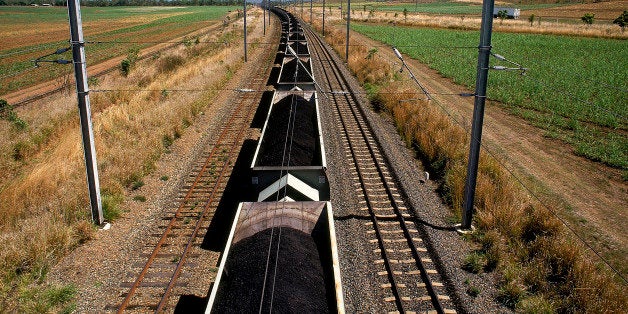
After years of planning and arguing, the U.S. government unveiled a proposal Friday to begin regulating the country's largest source of greenhouse gas emissions: power plants.
The U.S. power sector accounts for about a third of the country's greenhouse gas emissions like carbon dioxide, which accumulates in the atmosphere and traps heat that causes global warming. These emissions from power plants are currently unregulated, but President Obama announced in June that his administration was planning new rules.
An overview of those rules was released Friday morning by the Environmental Protection Agency. Here are four important things to know about them:
1. Fossil-fuel plants won't stop emitting carbon dioxide.
The average U.S. coal-fired power plant currently emits nearly 1,800 pounds of carbon dioxide per megawatt-hour (MWh). The EPA's plan would require newly built coal plants to emit no more than 1,100 pounds of CO2 per MWh.
The rules also cover new natural gas plants, although their smaller carbon footprint means few would need to deviate from current industry practices. The EPA plans to limit large gas plants (those producing at least 850 MW of electricity) to 1,000 pounds of CO2 emissions per MWh, while smaller gas plants would be limited to 1,100 pounds. The average natural gas plant now emits 800 to 850 pounds of CO2 per MWh.
This is a change from a previous version of the rules, released 18 months ago, that proposed one standard for all power plants regardless of their size or fuel type.
2. We'll hear more about natural gas and 'clean coal.'
The rules may spur lawsuits from coal-reliant industries, since they would require new coal plants to implement costly technology that no commercial coal plant has ever used. New facilities would likely need to employ "carbon capture and sequestration" (CCS), which involves removing CO2 from coal emissions, compressing it, pumping it through a pipeline and then injecting it into deep rock formations a mile or more underground.
Although the technology is still relatively new, a few CCS power plants are in development across North America. The EPA estimates CCS can reduce a plant's CO2 emissions by up to 90 percent. If applied to a single 500 MW coal-fired power plant — which emits about 3 million tons of CO2 per year — that would be equivalent to planting more than 62 million trees and letting them grow for 10 years. While the EPA's proposal might spark more interest (and innovation) in CCS, it should also encourage an existing trend in the U.S. power sector: burning cheaper, and slightly cleaner, natural gas instead of coal.
3. Burning coal would begin to reflect its true cost.
Releasing industrial waste into the environment is far more affordable than compressing and storing it. But since CO2 feeds the hugely expensive problem of climate change — and burning coal releases lots of CO2 — people worldwide are already paying for coal use. The basis of the EPA's plan is protecting public health, since the Supreme Court authorized the agency in 2007 to regulate CO2 under the Clean Air Act, but EPA Administrator Gina McCarthy has made it clear she also sees climate change as an economic issue.
The EPA's plan is designed to shift more of this expense to the companies that create it. Many energy companies, however, have warned they'll pass that cost on to customers via higher electricity rates. The plan would make coal a more expensive fuel source, but only by closing a loophole that currently allows its inevitable expense to be dispersed in the atmosphere. And cheaper options are on the horizon — not just natural gas, but also renewable energy sources that are falling in price due to improved technology.
4. Not much will happen anytime soon.
Although this would be a big deal for U.S. climate policy, none of it is going to happen overnight. First comes a 60-day public comment period, which will include a public hearing, followed by a lengthy finalization process that will stretch into next year. And while the CO2 regulation on new power plants isn't popular in the electricity industry, it's essentially a preview of the real battle: the upcoming limits of CO2 from existing plants.
The EPA plans to issue proposed CO2 standards for existing plants by June 1, 2014.
